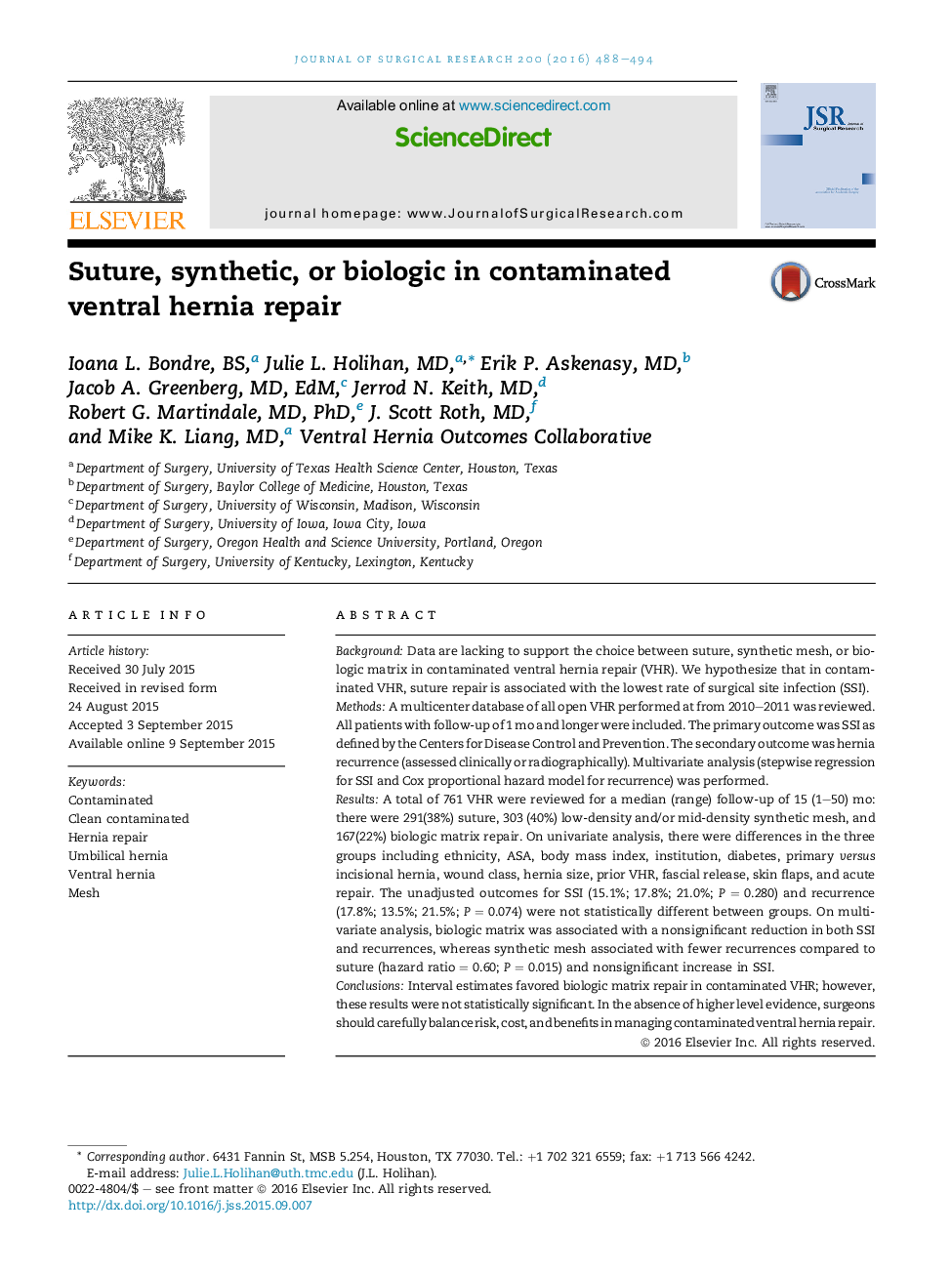| کد مقاله | کد نشریه | سال انتشار | مقاله انگلیسی | نسخه تمام متن |
|---|---|---|---|---|
| 6253380 | 1612526 | 2016 | 7 صفحه PDF | دانلود رایگان |
BackgroundData are lacking to support the choice between suture, synthetic mesh, or biologic matrix in contaminated ventral hernia repair (VHR). We hypothesize that in contaminated VHR, suture repair is associated with the lowest rate of surgical site infection (SSI).MethodsA multicenter database of all open VHR performed at from 2010-2011 was reviewed. All patients with follow-up of 1 mo and longer were included. The primary outcome was SSI as defined by the Centers for Disease Control and Prevention. The secondary outcome was hernia recurrence (assessed clinically or radiographically). Multivariate analysis (stepwise regression for SSI and Cox proportional hazard model for recurrence) was performed.ResultsA total of 761 VHR were reviewed for a median (range) follow-up of 15 (1-50) mo: there were 291(38%) suture, 303 (40%) low-density and/or mid-density synthetic mesh, and 167(22%) biologic matrix repair. On univariate analysis, there were differences in the three groups including ethnicity, ASA, body mass index, institution, diabetes, primary versus incisional hernia, wound class, hernia size, prior VHR, fascial release, skin flaps, and acute repair. The unadjusted outcomes for SSI (15.1%; 17.8%; 21.0%; P = 0.280) and recurrence (17.8%; 13.5%; 21.5%; P = 0.074) were not statistically different between groups. On multivariate analysis, biologic matrix was associated with a nonsignificant reduction in both SSI and recurrences, whereas synthetic mesh associated with fewer recurrences compared to suture (hazard ratio = 0.60; P = 0.015) and nonsignificant increase in SSI.ConclusionsInterval estimates favored biologic matrix repair in contaminated VHR; however, these results were not statistically significant. In the absence of higher level evidence, surgeons should carefully balance risk, cost, and benefits in managing contaminated ventral hernia repair.
Journal: Journal of Surgical Research - Volume 200, Issue 2, February 2016, Pages 488-494
